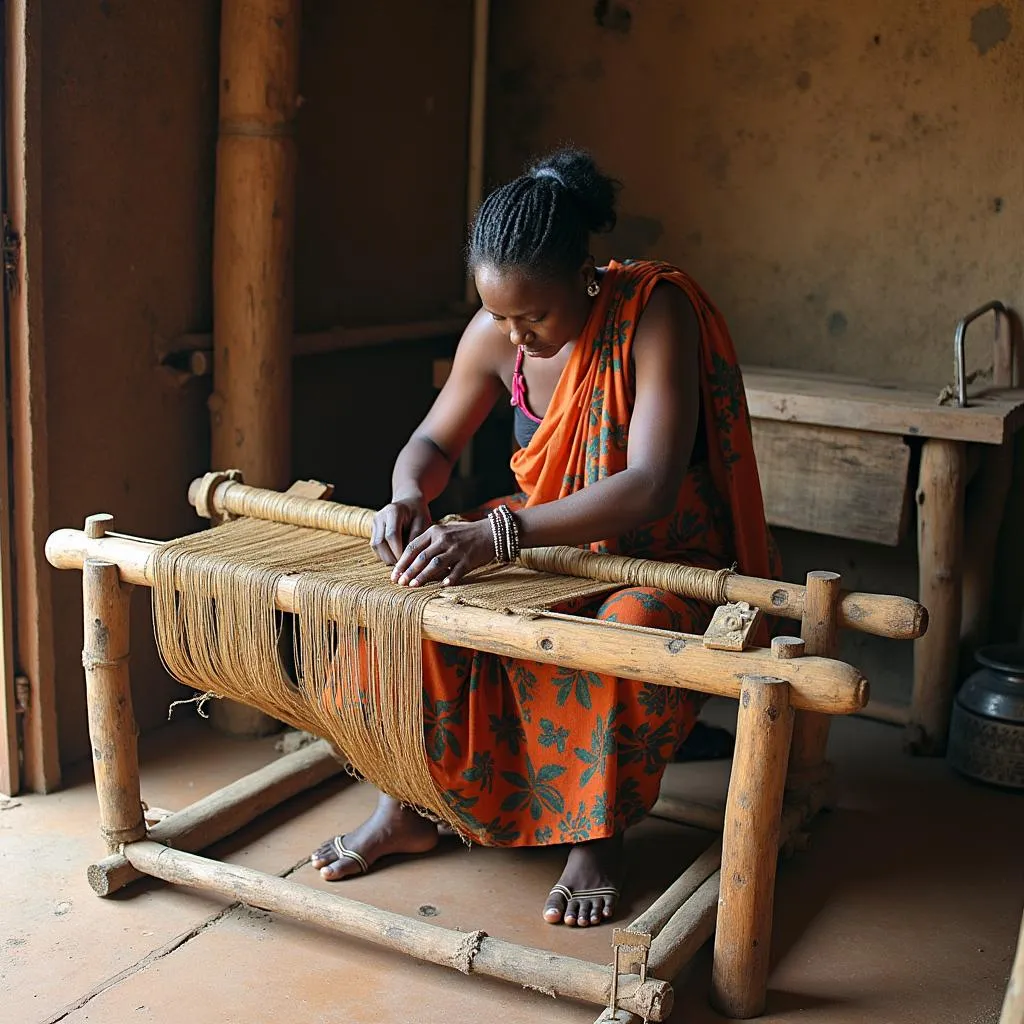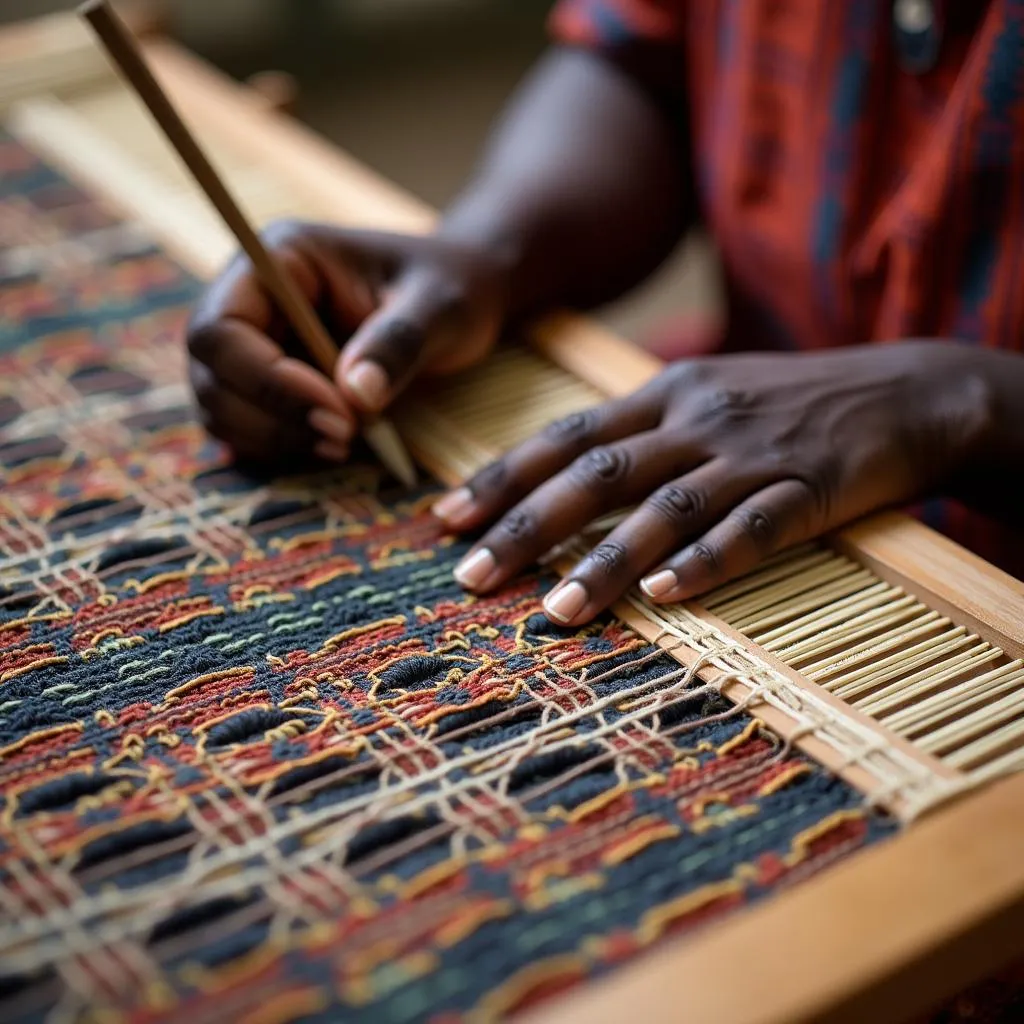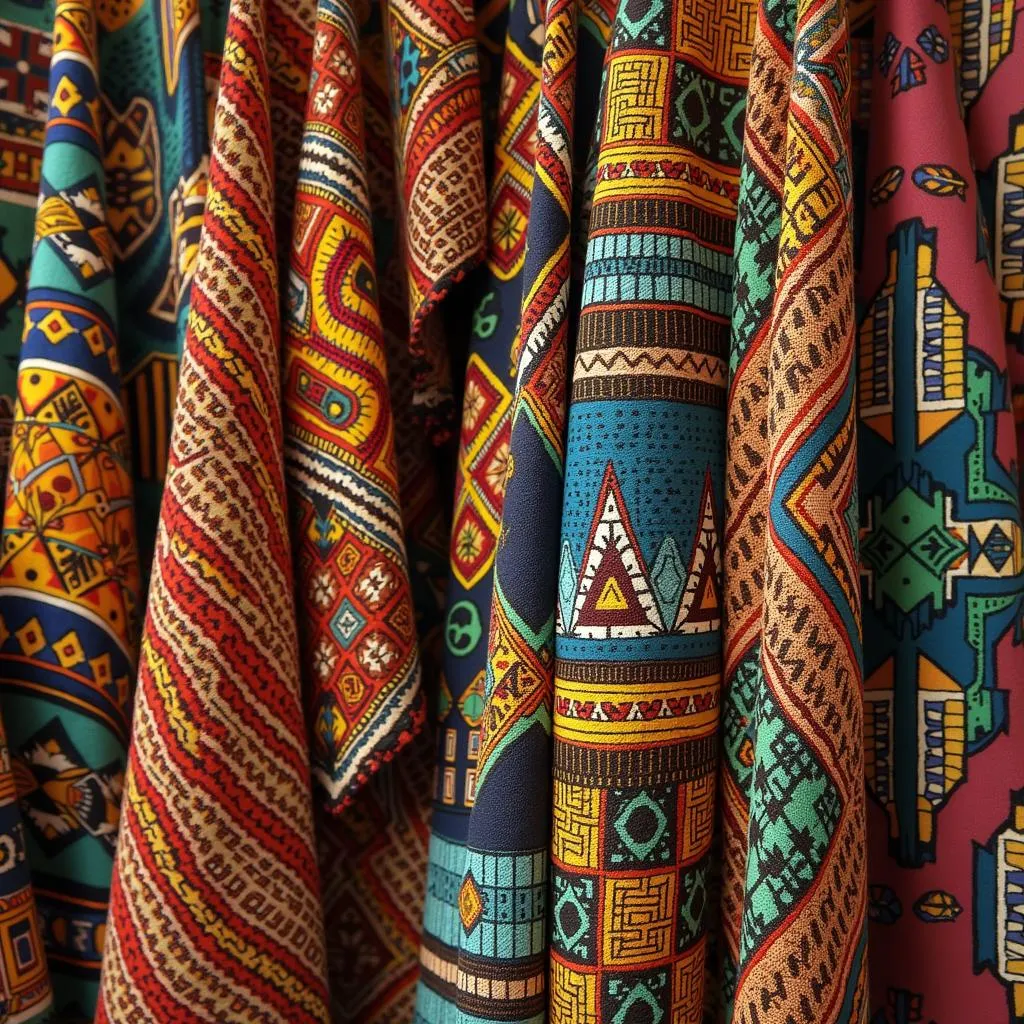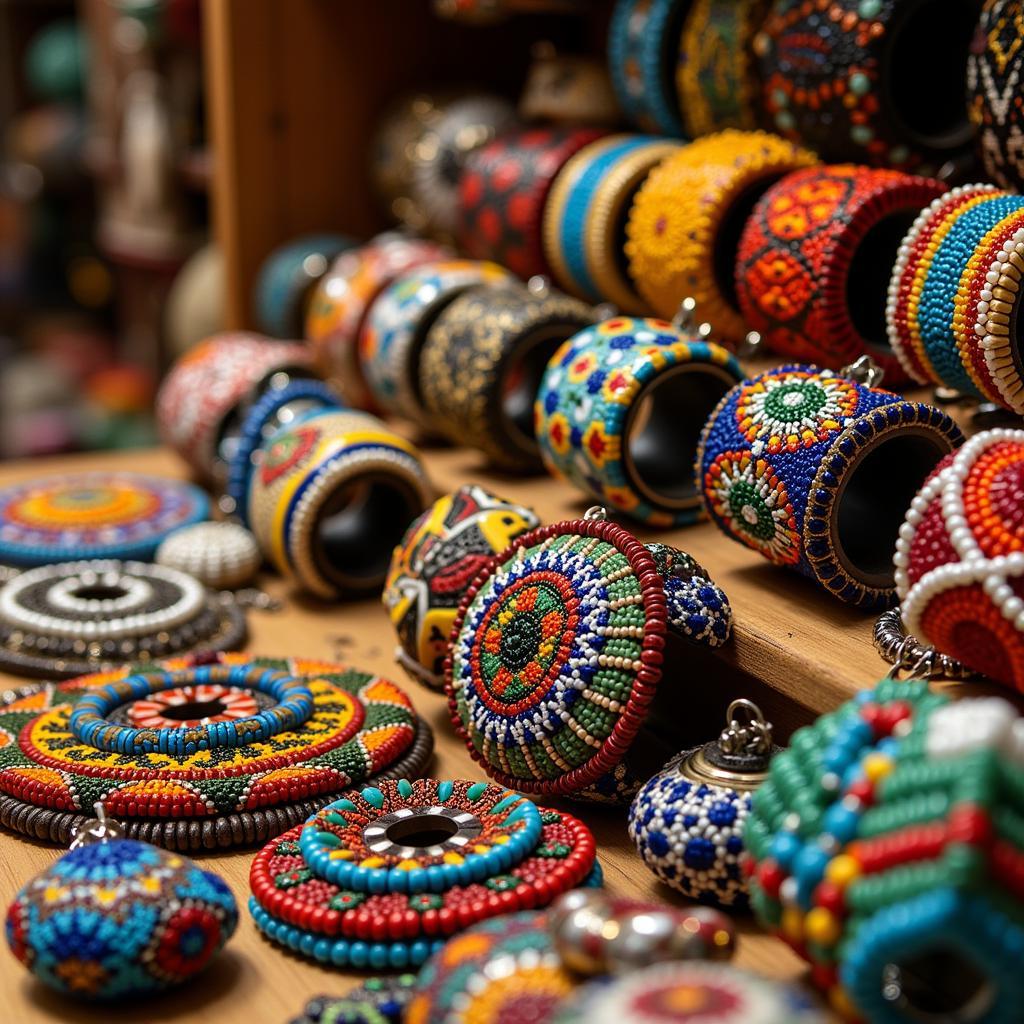African Cotton Weaving by Loom: A Timeless Tradition
African cotton weaving by loom is a rich and vibrant tradition that has been passed down through generations for centuries. More than just a craft, it is an art form deeply woven into the fabric of African culture, reflecting the continent’s diverse heritage and artistic ingenuity. From the intricate patterns of kente cloth in Ghana to the bold mud cloth designs of Mali, African textiles are renowned worldwide for their beauty, symbolism, and cultural significance.
A Journey Through Time: The History of African Loom Weaving
 Ancient African Loom Weaving
Ancient African Loom Weaving
The origins of loom weaving in Africa can be traced back thousands of years. Archaeological evidence suggests that early civilizations across the continent, including ancient Egypt and the Nok culture of Nigeria, developed sophisticated weaving techniques. These early textiles, often made from locally sourced materials like flax, raffia, and cotton, served both practical and ceremonial purposes. Over time, as trade routes expanded and new materials became available, African weaving traditions evolved, incorporating diverse influences and innovations.
The Artistry of the Loom: Tools and Techniques
African loom weaving is a labor-intensive process that requires patience, skill, and a deep understanding of traditional techniques. The most common type of loom used across Africa is the narrow strip loom, a simple but effective device that allows weavers to create long, narrow strips of cloth. These strips are then sewn together to create larger pieces of fabric.
Essential Tools of the Trade:
- Loom: Typically made from wood, the loom provides the framework for weaving.
- Warp Threads: These strong threads run vertically on the loom and form the foundation of the fabric.
- Weft Threads: These threads are passed horizontally through the warp threads to create the woven pattern.
- Shuttle: A tool used to carry the weft threads across the warp threads.
- Beater: A comb-like tool used to pack the weft threads tightly together.
 African Weaver Using Traditional Loom
African Weaver Using Traditional Loom
The weaving process begins with warping the loom, a meticulous task that involves carefully measuring and threading the warp threads onto the loom. Once the loom is warped, the weaver begins to interlace the weft threads through the warp threads, following intricate patterns that have often been passed down through generations. The weaver uses the shuttle to carry the weft threads across the warp threads and the beater to pack the threads tightly together, creating a durable and beautiful fabric.
Beyond Fabric: The Cultural Significance of African Textiles
African textiles are much more than just pieces of cloth; they are powerful symbols of cultural identity, status, and belief systems. The intricate patterns, colors, and designs woven into these textiles often hold deep meaning and significance within their respective cultures.
- Kente Cloth (Ghana): Known for its vibrant colors and geometric patterns, kente cloth is a symbol of royalty, wealth, and cultural pride among the Akan people of Ghana. Each pattern and color combination carries a specific meaning, often representing proverbs, historical events, or important figures.
- Mud Cloth (Mali): Traditionally made by the Dogon people of Mali, mud cloth is known for its earthy tones and bold graphic designs. The cloth is dyed using fermented mud and plant materials, creating unique patterns that reflect the natural world and Dogon cosmology.
- Aso Oke Fabric (Nigeria): Woven by the Yoruba people of Nigeria, Aso Oke fabric is a staple of traditional Yoruba ceremonies and celebrations. This hand-loomed cloth is often adorned with intricate embroidery and is worn by men and women as a symbol of cultural identity and social status.
 African Textiles Display with Kente and Mud Cloth
African Textiles Display with Kente and Mud Cloth
African Cotton Weaving by Loom in the Modern World
Despite the influx of mass-produced textiles, African cotton weaving by loom remains a vital part of the continent’s cultural heritage. Many skilled artisans continue to practice this ancient craft, preserving traditional techniques and designs while also embracing contemporary influences. Today, African textiles are highly sought after by collectors, fashion designers, and art enthusiasts worldwide, bringing global recognition to the beauty and artistry of these unique cultural treasures.
